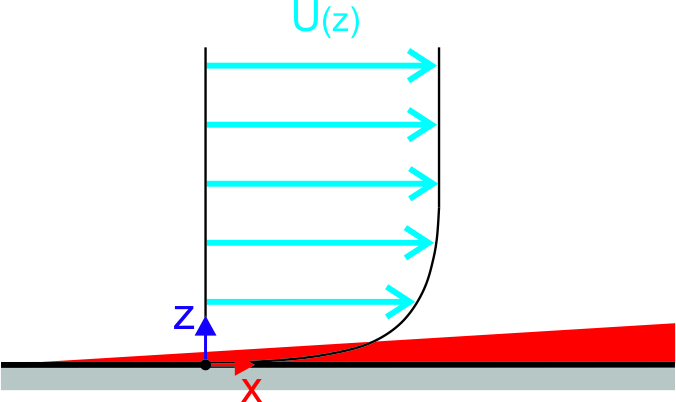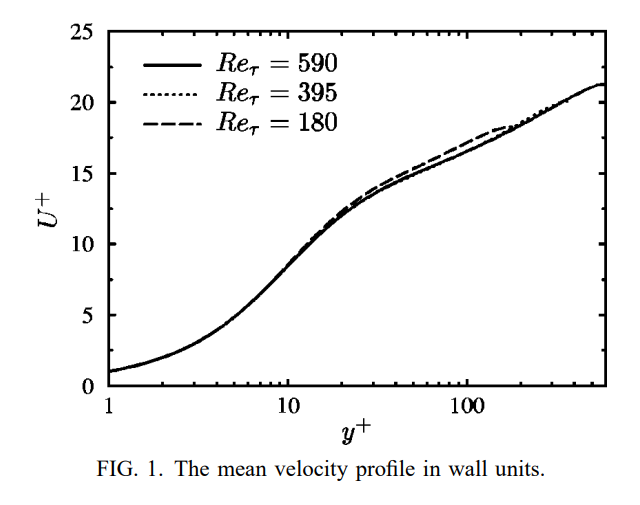The simulation of the flow near the wall in the boundary layer is numerically demanding, the viscous properties of the fluid prevail here and the velocity profile is very steep.
The velocity on the surface of the model is zero and continues to increase very rapidly (large velocity gradients). In order to capture these large velocity gradients in a CFD calculation, a very fine mesh is needed close to the wall, but this leads to a large mesh and a memory and time consuming calculation.
Therefore, in CFD modelling of the velocity profile in the boundary layer, the approximation by piecewise-linear function is not used, but the non-linear functions are used (see the image above). Non-linear functions, or wall functions, allow us to have significantly larger mesh cells at the wall and still capture all the properties of the boundary layer flow. In order to know the shape of the wall function, we need to know the shape of the real velocity profile in the boundary layer, which is obtained either from experiment or DNS (Direct Numerical Simulation), see the image below, taken from the literature [1].
Wall functions (wall units) are dimensionless functions that we use to model the measured velocity profile and try to approximate it as closely as possible, U+ and y+ are dimensionless velocity and dimensionless distance from the wall, more detailed information about the wall functions can be found in ANSYS Manual or CFD Direct [2]. We give the quantities in dimensionless form in order to achieve the correct boundary layer development in our CFD calculation independent of the free-flow conditions, shape and dimensions of the geometry. The dimensionless metric (distance) y+ gives the distance from the wall in the boundary layer, scaled according to the flow parameters, friction velocity and viscosity, and is given by the formula:
|
ρ |
Fluid density (homogeneous and incompressible flow) |
|
y |
Distance of the normal to the wall |
|
uτ |
Friction velocity |
|
μ |
Dynamic viscosity of the fluid |
The friction velocity uτ can be based on wall shear stress or turbulent kinetic energy, in our case, it is based on wall shear stress and is given by the Eq:
The dimensionless distance aka wall distance in RWIND 3 is for now only available for Steady Flow calculation. The y+ is calculated from the distance from the model wall y to the cell centroid in the first layer of mesh cells around the model, the y+ value can then be displayed and checked on the model cells.
To view y+, you have to activate "Results on Computational Mesh" in "Edit Bar - Simulation":
Then, you can find this quantity in the Mesh Inspector window, where you can use the mouse to view y+ on the model cells.




